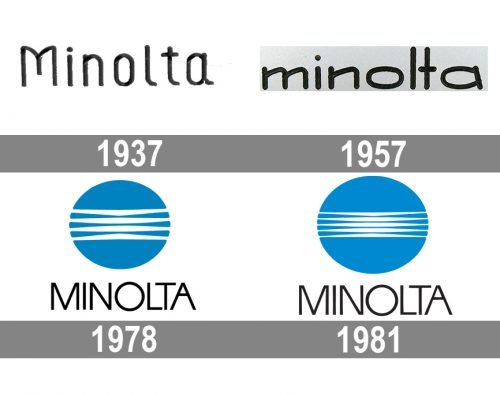Minolta is a brand of Japanese camera manufacturer, which merged with Konica Corporation and formed Konica Minolta in 2003. Minolta creates the first autofocus in a 35 mm SLR camera.
Meaning and history
1937 — 1957

The original Minolta logo included only the name of the brand in black. It was set in block letters that had handwritten style. The first letter was capitalized, while all the other letters were lowercase.
1957 — 1978
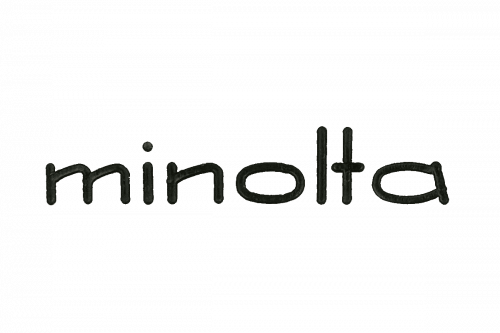
This was also just a black wordmark, but the style was slightly different, simpler, laconic. The “M” was lowercase, while the rounded ends of the “l,” “t,” and “a” disappeared.
1978 — 1981
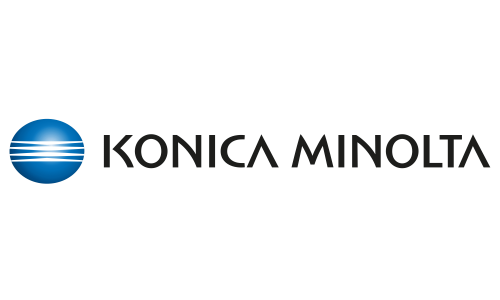
This is when the blue circle made its debut. Like in the following logos, the circle was placed above the name of the brand. Here, it was given already in a dramatically different (although still minimalist) typeface.
1981 — 2003
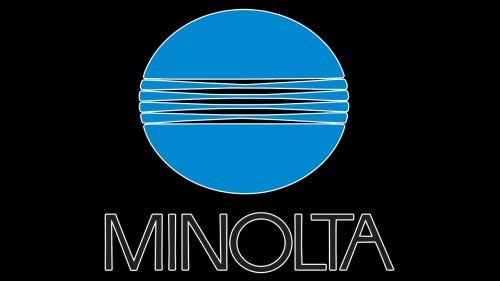
The last Minolta logo, which was introduced in 1981, is a visualization of the brand value. It consists of the globe mark symbol and logotype.
The graphic icon represents the Earth, expressing the infinite expansion of the brand and the offering of innovative value to customers throughout the world. The five lines on the globe mark represent light beams and express the company’s wide-ranging technological expertise in the field of imaging.
The blue color scheme of the logo symbolizes creative innovation and the main color is called Konica Minolta Blue.
The custom typeface of the wordmark, executed in black, expresses brand’s precision and quality.
Minolta Co., Ltd. (ミノルタ, Minoruta) was a Japanese manufacturer of cameras, camera accessories, photocopiers, fax machines, and laser printers. Minolta Co., Ltd., which is also known simply as Minolta, was founded in Osaka, Japan, in 1928 as Nichi-Doku Shashinki Shōten (日独写真機商店, meaning Japanese-German camera shop). It made the first integrated autofocus 35 mm SLR camera system. In 1931, the company adopted its final name, an acronym for "Mechanism, Instruments, Optics, and Lenses by Tashima".[1][third-party source needed]
Read More: https://en.wikipedia.org/wiki/Minolta
1873
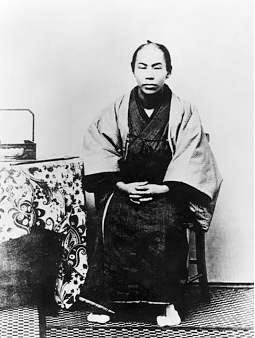
Rokusaburo Sugiura begins selling photographic and lithographic materials at Konishiya Rokubeiten in Kojimachi, Tokyo (the beginnings of Konica Corporation)
Konishiya, which started as a rice merchant, was a leading business establishment in Tokyo. Rokusaburo Sugiura, who was later renamed Rokuemon Sugiura VI, had his photograph taken at a photography studio when he was twenty-five years old. This experience impressed him greatly and prompted him to begin selling photographic materials. Later, he left his family's business and launched his own shop, Konishi Honten, in Nihonbashi, Tokyo, to deal in photographic materials and medicines.
1903
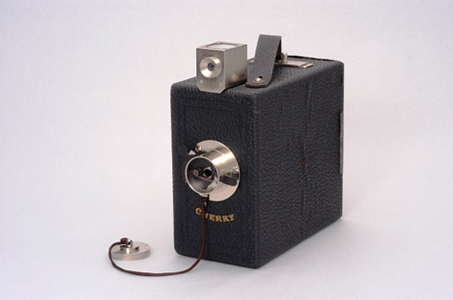
The Cherry Hand Camera, Japan's first brand name camera, and Sakura Hakkin Type Paper, Japan's first photographic paper are marketed
Rokuemon established Rokuosha Factory in Shinjuku, Tokyo in 1902 to develop and manufacture photosensitive materials. The Cherry Hand Camera could accommodate six dry plates (57 mm x 83 mm) and was sold at a reasonable price. While cameras had been a special product available only to a limited group of people, such as photography studio owners, the introduction of the Cherry Hand Camera made cameras more affordable for general consumers.
1923
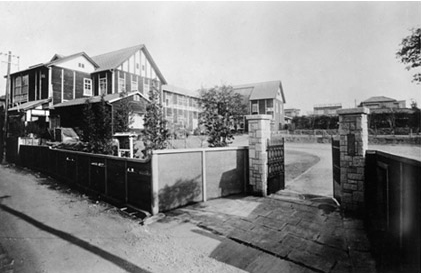
Konishi Professional School of Photography (present-day Tokyo Polytechnic University) is established
To administer the will left by Rokuemon, a photography school was founded in 1923 to train technical and artistic skills to photographers. This school, known today as Tokyo Polytechnic University, continues to produce many high caliber photographers.
1928
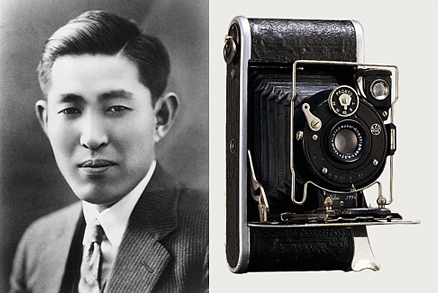
Kazuo Tashima establishes Nichi-Doku Shashinki Shoten (Japan-Germany Camera Company, later known as Minolta Co., Ltd.) to produce cameras in Japan, and launches its first camera product, Nifcalette, the following year
On November 11, 1928, the company that would be known as Minolta in later years opened its first factory in present-day Nishinomiya City, Hyogo Prefecture. The founder, Kazuo Tashima, who worked for an ad agency in Tokyo after graduating from university, returned to his hometown after Tokyo was hit by the Great Kanto Earthquake. During a visit to Europe, he discovered the great possibilities of optical equipment, which made him decide to start a company upon his return to Japan. In those days, there was no subcontracting system, and each small component was produced in-house under the guidance of engineers invited from Germany.
1933
The internally developed and produced X-ray film, Sakura X-ray Film is released
1936
Reorganization is carried out to establish a joint-stock company, Konishiroku Honten (later renamed Konica Corporation)
1940
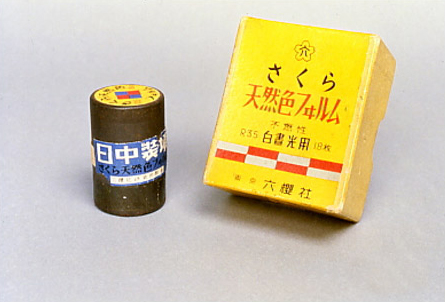
The first Japanese-made color film, Sakura Natural Color Film, is announced, and launched the following year
This was a much-awaited Japanese-made color film, and the result of eleven years of persistent efforts for technical improvement that had been underway since the introduction of Sakura Film, the first internally developed film of Konica (named Konishiroku Honten at the time) in 1929.
1951
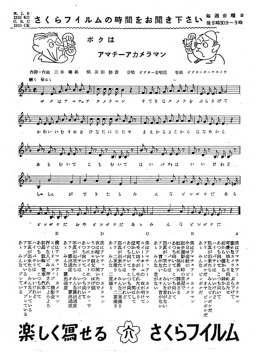
Japan's first commercial song "I Am an Amateur Cameraman" is aired on New Japan Broadcasting System (NJB) and Chubu Nippon Broadcasting (CBC) on September 7
Commercial radio broadcasting began in Japan on September 1, 1951. Konica (named Konishiroku Photo Industry Co., Ltd. at the time) bought a 30-minute slot to sponsor one of the first commercial radio programs, and asked Toriro Miki, a popular songwriter and composer, to write a theme song for the program. In response to this request, Miki thought it a good idea to air a commercial song, which would have been impossible in the past when broadcasting services had been offered only by NHK, a public, non-commercial broadcasting service. Thus Japan's first commercial song was launched, which, quite uniquely, contained no mention of the company, nor product names.
1956
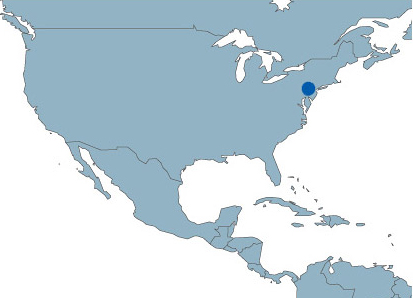
The first American subsidiary is established in Philadelphia, USA
In 1952, Konica Camera Company, an American distributor of Konica (named Konishiroku Photo Industry Co., Ltd. at the time) was opened in Philadelphia, USA to facilitate distribution of products. This was followed by the establishment in the same city of an American subsidiary, Koniphoto Corporation in September 1956 to reinforce import and after-sales services.
1958
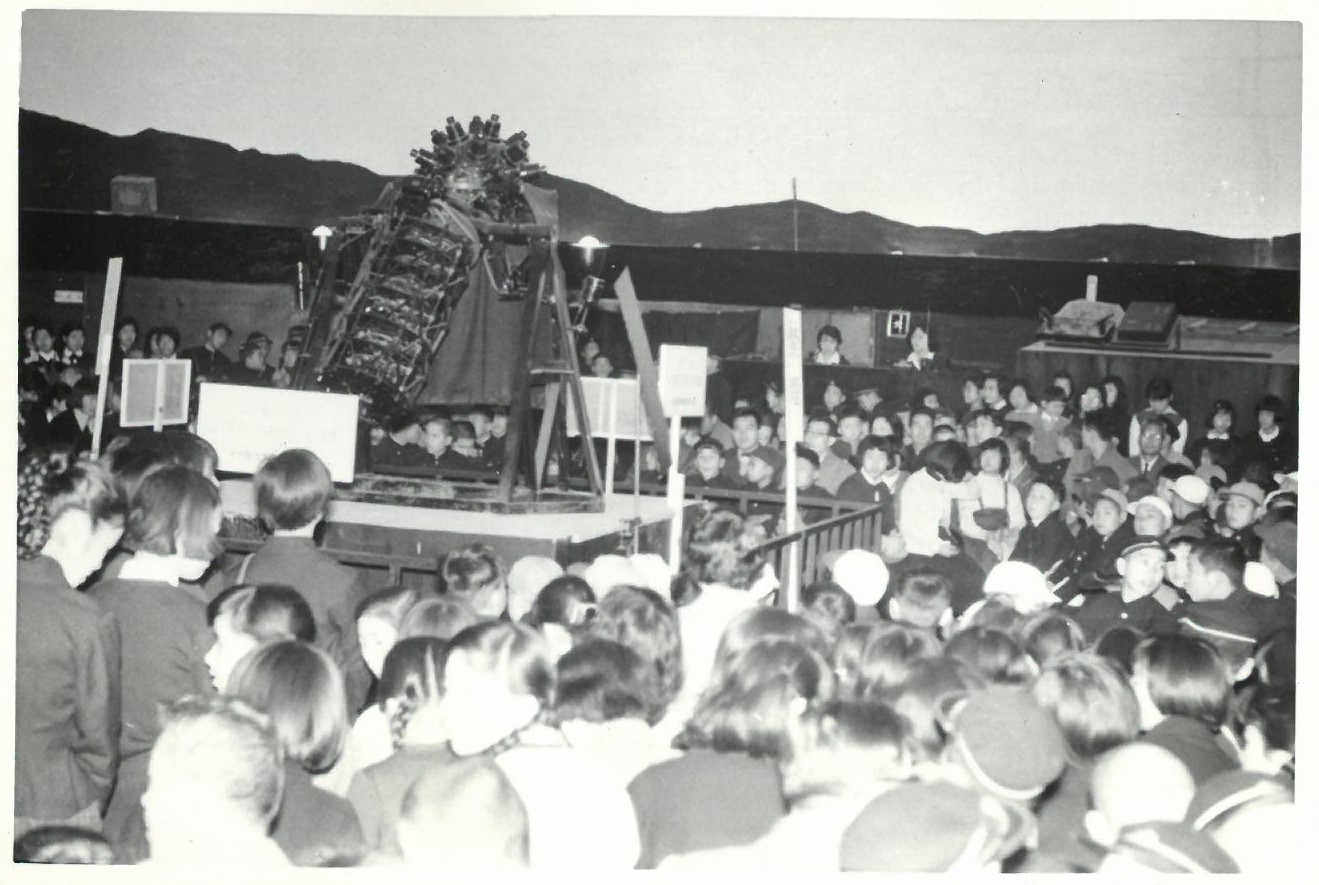
The company's first planetarium unit is completed and opened to the public at a science exposition in Hanshin Park.
As the founder, Kazuo Tashima had a great interest in stars, Minolta (named Chiyoda Kogaku Seiko at the time) continued efforts to develop a planetarium in cooperation with Masasuke Nobuoka, an amateur inventor.
Their efforts yielded results in 1958 with the completion of the first planetarium unit, which was opened to the public at a science exposition held in Hanshin Park (an amusement park in Hyogo Prefecture) and was very popular.
1960
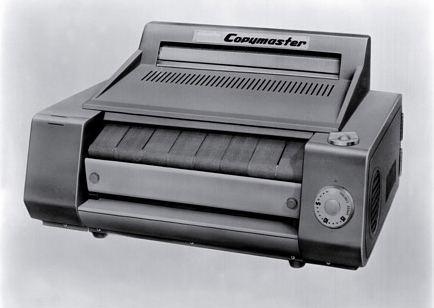
The company's first copier, Minolta Copymaster, (a wet-process diazo copier) is completed
Minolta (named Chiyoda Kogaku Seiko at the time) set about development of optical equipment, particularly copiers, leveraging their technical expertise in camera products, and completed the first copier, Minolta Copymaster, a wet-process diazo copier, in 1960. After the introduction of this product, Minolta continued development efforts to meet customer needs that were growing rapidly backed by the advancement of the information society.
1962
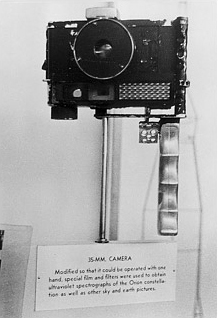
Minolta Hi-Matic camera is used by astronaut John Glenn in his Friendship 7 mission, the first American manned orbital space flight
During the 1950s, Minolta (named Chiyoda Kogaku Seiko at the time) was among the first in the Japanese industry to participate in camera fairs in the USA and take positive steps to expand business in overseas markets. In those days, the USA was in a fierce competition with the USSR regarding space exploration. To compete with the USSR (which succeeded in the world's first manned space flight), the USA launched the Friendship 7 mission with their national pride at stake. For this important mission, NASA selected the Minolta Hi-Matic camera to record the space flight from among a number of candidates all over the world, and the Hi-Matic camera successfully completed its role in space. This great accomplishment made the name of Minolta instantly famous worldwide.
1962
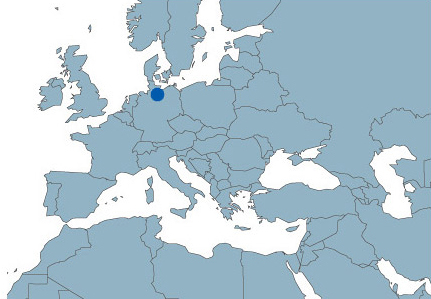
The first European subsidiary is established in Hamburg, Germany
In December 1962, Konica (named Konishiroku Photo Industry Co., Ltd. at the time) established Camera Europe Center in Hamburg, Germany to reinforce its distribution and after-sales service systems in the European market. In the following year, Konica made its debut at the 8th Photokina fair held in Cologne, and steadily increased its exports to Europe.
1971
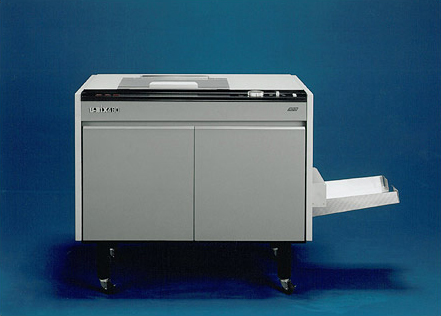
High-performance photostatic plain paper copier, U-Bix480, is launched
After years of R&D efforts and using its proprietary technology, Konica (named Konishiroku Photo Industry Co., Ltd. at the time) succeeded in development of an electro-photographic copier using plain paper, or plain paper copier (PPC) that is widely used today. First introduced in a business show held in Tokyo in 1970, this model was launched in 1971 when it was given the name U-Bix480. It achieved such a great success that orders surpassed the production capacity of the company. After the introduction of this model, copiers became the company's core products, along with cameras and films.
1973
Sakura Color ID System, a driver's license printing system, begins service across Japan
1975
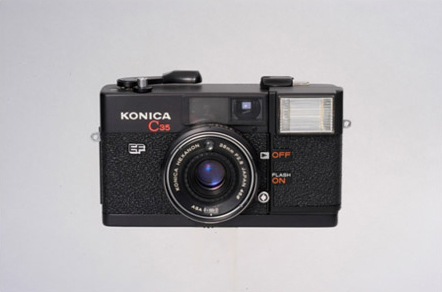
The world's first 35mm camera with built-in flash and auto exposure functions, Konica C35EF, is launched
Consistent efforts to maximize ease of operation led to the development of the C35EF, the world's first 35mm camera with built-in flash and auto exposure functions. This product was designed to meet the basic needs of general users for a camera that would allow them to take photos at any time without the complicated process of adjusting exposure settings. This product was a phenomenal success and heralded the popularization of cameras.
1977
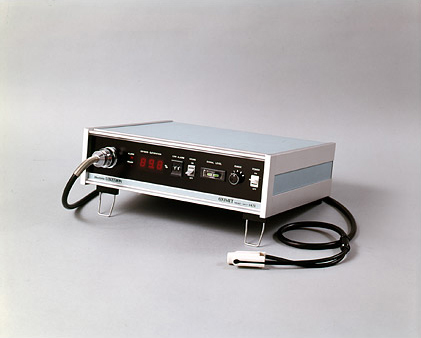
The world's first finger-measurement type pulse oximeter, OXIMET MET-1471, is launched
A pulse oximeter is a device which measures the oxygen saturation level of arterial blood (SpO2) without drawing blood. Due to its ability to detect the amount of oxygen in the body on a real-time basis, this device is widely used in operating rooms and intensive care units in hospitals, as well as for treating respiratory outpatients. Minolta (named Minolta Camera Co., Ltd. at the time) launched OXIMET MET-1471, the world's first finger-measurement type pulse oximeter, and has since continued development, production and distribution of this product.
1977
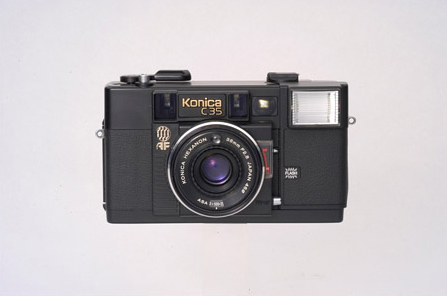
The world's first 35mm compact autofocus camera, Konica C35AF, is launched
The world's first autofocus camera, the Konica C35AF, was developed through dedicated R&D efforts to prevent defocusing, which, according to a market survey, was responsible for thirty-six percent of failed photos. With its autofocus function, this camera allowed users to take clear photos easily and freely just by pressing the shutter button.
1980
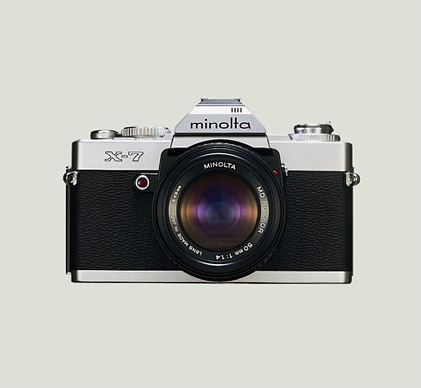
TV commercial for the Minolta X-7 featuring Yoshiko Miyazaki causes a sensation
Minolta (named Minolta Camera Co., Ltd. at the time) launched a TV commercial featuring a female university student, Yoshiko Miyazaki, to promote the Minolta X-7, a user-friendly, high cost-performance single-lens reflex camera with automatic exposure control for general users. The commercial, along with its song, caused a great sensation in Japan and largely contributed to the successful sales of this product.
1983
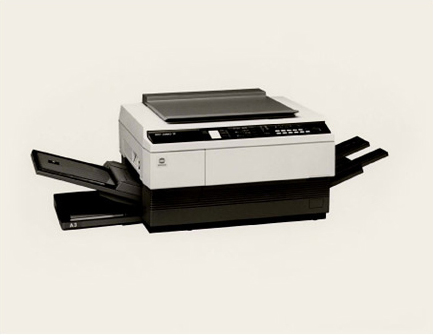
The world's first copier with stepless zoom magnification/reduction function, EP450Z, is launched
The EP450Z offered by Minolta (named Minolta Camera Co., Ltd. at the time) featured a stepless zoom function allowing users to choose any magnification/reduction ratios between 0.64 and 1.42. Compared with conventional copiers with fixed magnification/reduction ratios, this product boasted superior operability and enjoyed great success worldwide. This product was also equipped with sophisticated functions such as automatic document feeder and automatic paper selection. For its user-friendliness and highly functional design, the EP450Z was awarded the Good Design Award in Japan. With the success of this model, copiers became the core products of Minolta.
1984
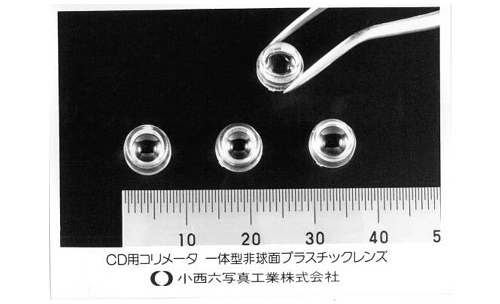
Ultra-high-precision aspheric plastic lens for CD players is developed
Leveraging expertise gained from the development of camera lenses, Konica (named Konishiroku Photo Industry Co., Ltd. at the time) succeeded in developing the world's first aspheric plastic lens for CD drives for commercial use. Following this success, Konica began production of pickup lenses for various optical discs including DVDs and Blu-ray DiscsTM*, which are now among the most widely sold products in the world.
*Blue-ray DiscTM is a trademark of Blue-ray Disc Association.
1985
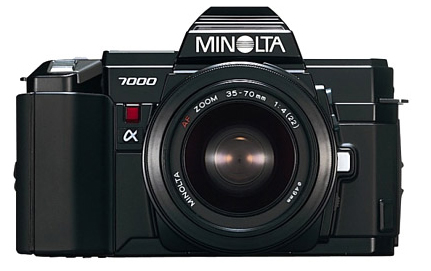
Minolta 7000, Single-lens reflex camera with a professional-quality autofocus function, is launched
Minolta (named Minolta Camera Co., Ltd. at the time) became the first company in the world to offer a single-lens reflex camera with a professional-quality autofocus function when it introduced the Minolta 7000. This camera experienced explosive sales worldwide. Following the phenomenal success of this product, a host of single-lens reflex autofocus cameras were launched in succession by various other companies. Previously, single-lens reflex cameras had been difficult to use and designed only for professionals and camera enthusiasts, but had become user-friendly devices that allowed anyone to take clear photos easily.
1987
Konishiroku Photo Industry Co., Ltd. is renamed Konica Corporation and all the company's products are offered under the "Konica" brand
1987
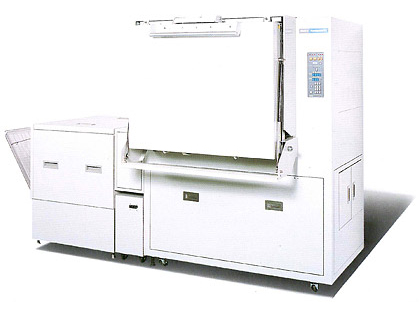
Simple color-proofing system, Konsensus, is launched
To address the pressing need of the printing industry for simplification of the color-proofing process, Konica launched Konsensus, a simple color-proofing system utilizing silver halide color paper. Since its introduction, this product has been widely adopted in the printing industry.
1989
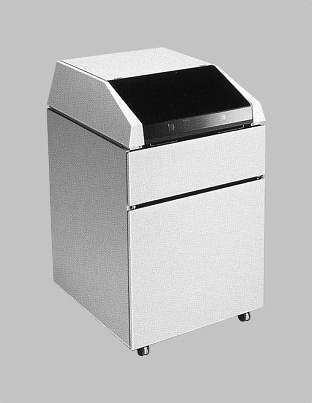
Laser Imager Li-10, medical digital imaging output system, is launched
Since its inception, Konica has been engaged in the import, distribution and production of X-ray films for medical use and medical equipment. Backed by its proprietary imaging and material technologies gained from years of R&D in the field of photography, Konica began full-fledged efforts to address the needs for the digitalization of medical services that would accelerate in the 1990s. The Laser Imager Li-10, a device to laser-print digital data acquired from CT and MRI scans on photosensitive materials, led this trend.
1990
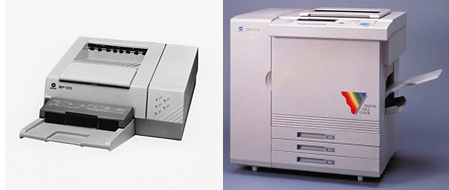
Minolta fully enters the laser beam printer market with the introduction of a SP101, monochrome laser printer, is launched. Additionally, a CF70, digital full-color copier, is launched
Minolta (named Minolta Camera Co., Ltd. at the time) had been working to reinforce the office equipment business as its second pillar of management. To do so, it fully entered the laser beam printer market with the introduction of a compact monochrome laser printer, SP101, and also launched a full-color digital copier, the CF70, which was equipped with the proprietary Laser Intensity Modulation System (LIMOS) and thus capable of producing high-quality copies. In recognition of the excellence of this technology, Minolta was awarded the Outstanding Technology Prize by the Society of Electrophotography of Japan (presently called the Imaging Society of Japan) in the same year.
1994
Minolta Camera Co., Ltd. is renamed Minolta Co., Ltd.
2000
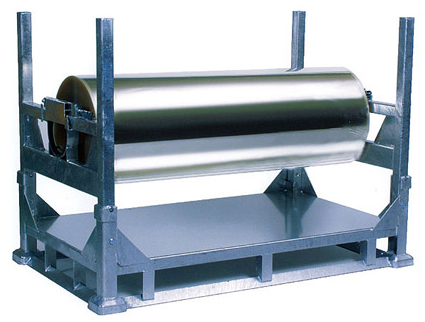
Fully launched business for TAC films for LCD polarizers
TAC films are one of the most important materials of liquid crystal displays that are widely used today in PCs, TVs, mobile phones and car navigation systems. Konica's TAC films, which are developed with the company's state-of-the-art photographic film technologies, are renowned for their thinness and uniformity, and demand for the films have increased rapidly with the expansion of the market. To cater to these increasing demands, Konica opened a TAC film factory in Kobe in the same year.
2000
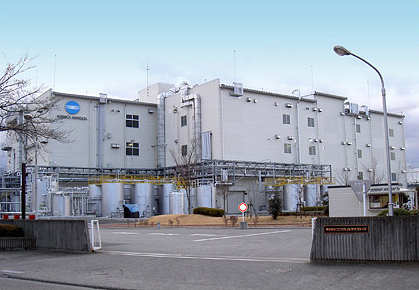
Konica Minolta Supplies Manufacturing Co., Ltd. is established as a joint venture for the production of polymerized toner
Konica Corporation and Minolta Co., Ltd. announced that they entered into a business partnership in the field of business technologies in April 2000, and as part of this partnership, Konica Minolta Supplies Manufacturing Co., Ltd. was established as a joint venture of the two companies in December 2000 to begin production of polymerized toner*, which was attracting attention a as next-generation toner.
*Polymerized toner is a high-performance toner produced by combining resins used to make plastics with color pigment particles through a chemical reaction.
2003
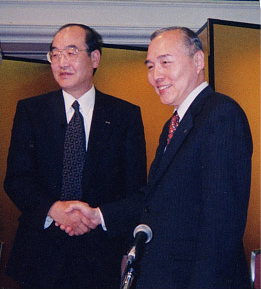
A holding company, Konica Minolta Holdings, Inc. is established by integrating the management of Konica Corporation and Minolta Co., Ltd.
Konica Corporation and Minolta Co., Ltd., which had long fostered a relationship of mutual trust mainly through partnerships in the field of business technologies, became one company through management integration in August 2003 with a view to increasing competitiveness and maximizing corporate values. The new company made a fresh start in October 2003 under a new corporate system comprised of a holding company, business companies and common function companies, following reorganization and integration of the business units within the group.
2004

New brand name for office equipment, "bizhub," is announced
As a symbol of "new Konica Minolta," the company adopted a new brand name for MFPs (Multi-functional peripherals), "bizhub," a newly coined term combining "biz (business)" with "hub."
2004
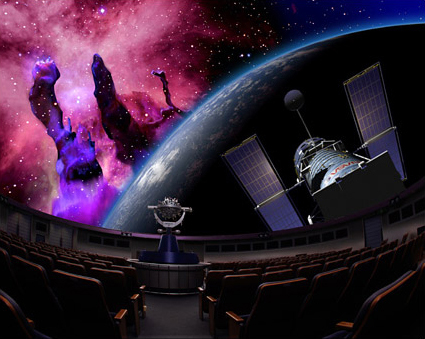
Konica Minolta opens its own planetarium, Sunshine Starlight Dome "Manten"
Konica Minolta opened it as the first planetarium in the world directly managed by its manufacturer, named Sunshine Starlight Dome Manten (currently named Konica Minolta Planetarium Manten), in Tokyo in March 2004. The state-of-the-art optical planetarium system combined with full-color high-quality computer-graphics movies projected on the entire dome has proved very popular and the number of visitors reached the one-million mark in 2007.
2004
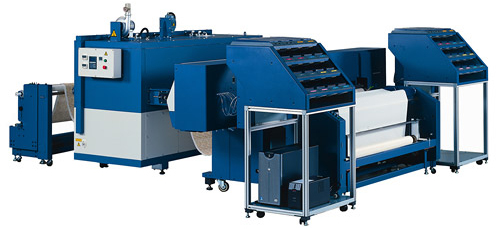
Nassenger V, next-generation inkjet textile printer, is launched
Unlike conventional screen printing, inkjet textile printing, with its innovative printing method, does not require the process of making screens and blending color paste, and thus can cater to the demand for high-mix low-volume production promptly, easily, and at low cost. The cutting-edge digital textile printer, Nassenger V, can deliver high printing quality and high productivity with its small-droplet and high-density multiple-nozzle head. Since the successful introduction of this model, Konica Minolta has steadily expanded its lineup of inkjet textile printers.
2004
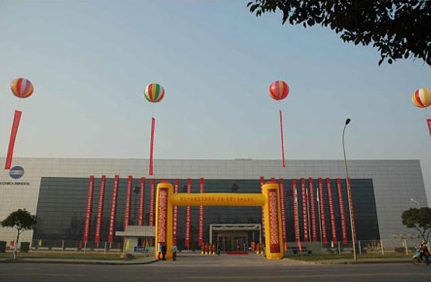
A holding company and a production site for MFPs and printers are established in China
Konica Minolta established a wholly owned investment company (an umbrella-type company) in Shanghai (presently Konica Minolta (China) Investment Ltd.) to reinforce the group's sales structure in the Chinese market. The company also established Konica Minolta Business Technologies (Wuxi) Co., Ltd., as its production site for MFPs and printers.
2005
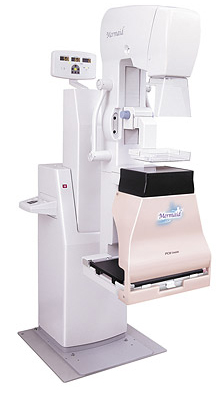
The world's first phase contrast mammography unit is launched
A mammography unit is used for X-ray examinations of the breasts. With its phase contrast technology, the unit can produce outstandingly clear images of factors critical to identifying early signs of breast cancer such as mammary gland structure, as well as abnormalities including mass and minute calcification in the breast, which are barely detectable when using conventional mammography units.
2005

Konica Minolta Honda Team competes in the MotoGP, the world's premier motorcycle racing event
The MotoGP class, the world's premier motorcycle racing world championship, is one of the three most popular spectator sports in Europe, along with F1 racing and soccer. Konica Minolta joined in this prestigious race as "Konica Minolta Honda Team" with a view to increasing its brand recognition and enhancing its brand image.
2007
Konica Minolta withdraws from the photo and camera business
2007
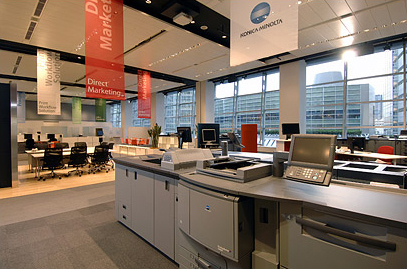
Digital Imaging Square, the first presentation space oriented toward the production print market, is opened
Since its entry into the production print market, Konica Minolta has continued to offer Print on Demand (POD) systems with its high-speed MFPs capable of producing high-quality images quickly and reliably. To better serve customers in this market, Konica Minolta opened the Digital Imaging Square in Tokyo, where the company's professional staff work with customers to address their problems and together create added values.
2010
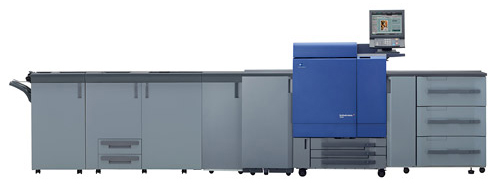
bizhub PRESS C8000, digital printing system, is launched
Production printing for commercial printing and central reproduction department markets requires especially high reliability in print quality and production capability. Konica Minolta launched a digital printing system, "bizhub PRESS C8000," as the flagship model of its color printer family, which delivers high image quality that is comparable to offset printing, and ensures high speed and superior reliability.
2011
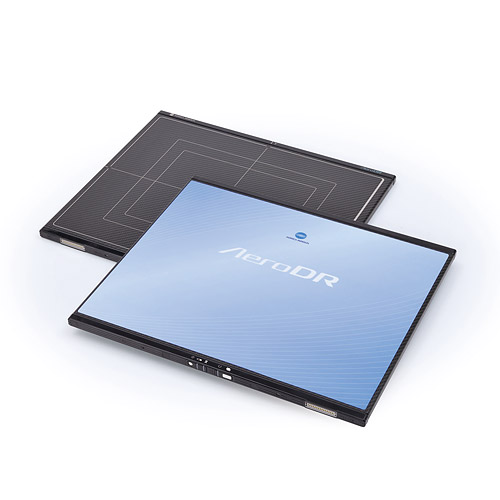
AeroDR, cassette-type digital radiography system, is launched
Compared with film, digital radiography (DR) not only reduces the amount of X-ray radiation received by patients, but also it has the advantage of enabling the display of a higher-precision image immediately after taking the X-ray. However, conventional DR poses several operability problems, including its heavy weight and the necessity of power and data transmission cables. AeroDR, which was developed by Konica Minolta, solves these problems by reducing the weight to a minimum and making data transmission wireless—solutions that have contributed to a broader use of DR.
2011
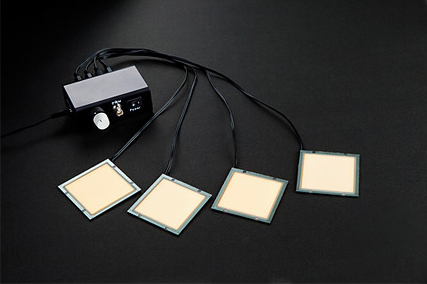
The world's first Organic Light Emitting Diode (OLED) lighting panels using only phosphorescent materials are released
Uniquely characterized by its thinness, light weight and surface light source, OLED lighting equipment is gaining greater attention as next-generation lighting equipment. Konica Minolta succeeded in the development of OLED lighting panels with one of the world's highest luminous efficiency*1 using only phosphorescent materials and was the first in the world to offer them for commercial use*2. The company began selling sample kits of these panels in October 2011 under the brand name Symfos.
*1 The world's highest among mass-produced OLED lighting panels available in the market as of October 3, 2011 (Source: Konica Minolta)
*2 The first company in the world to offer OLED lighting panels that use only phosphorescent materials as of October 3, 2011 (Source: Konica Minolta)
2012
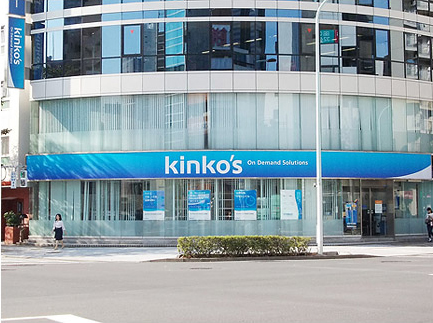
Konica Minolta acquires FedEx Kinko's Japan, the largest print shop in Japan
Production print business for commercial printing and central reproduction department markets is one of the strategic business segments of Konica Minolta. To enhance competitiveness in this important segment, Konica Minolta took proactive measures to accelerate business development, such as acquiring FedEx Kinko's Japan, the largest on-demand print service company in Japan, in May 2012; Charterhouse PM Limited, a leading print management service company in the U.K. in November 2012; and FedEx Kinko's Korea Ltd., the largest copy and print service provider in Korea, in January 2013, as well as investing in and forming a strategic alliance with MGI Digital Graphic Technology in France in January 2014.
2012
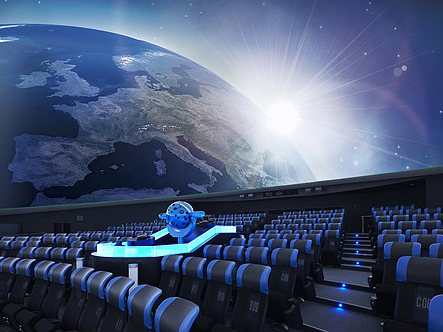
Konica Minolta Planetarium "Tenku" is opened at the TOKYO SKYTREE TOWN®
With the completion of the TOKYO SKYTREE, Konica Minolta opened its second directly managed planetarium, Tenku, in TOKYO SKYTREE TOWN®. Consisting of an optical planetarium system that projects beautiful and realistic images of stars, and a digital planetarium system that provides dynamic 3-D images of space, Tenku shows various interesting programs every day.
2013

The group management system is reorganized and the company name changed to Konica Minolta, Inc.
While Konica Minolta had maintained a holding company system since its inception in 2003, seven companies in the group were merged in April 2013 as part of a reorganization of the management system. Under this new structure, the company's trade name was changed to Konica Minolta, Inc. from Konica Minolta Holdings, which indicated a pure holding company status. This reorganization aimed to accelerate various initiatives designed to increase corporate value by enhancing management capabilities in the Business Technologies Business, facilitating strategic and agile utilization of management resources, and building systems to support efficient operation.
2013
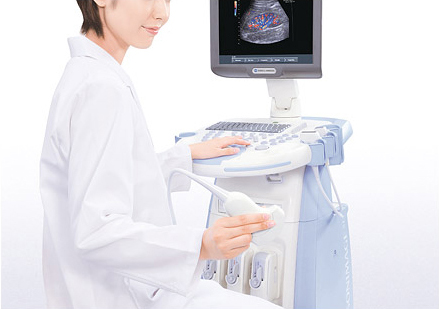
Konica Minolta and Panasonic Healthcare sign an agreement on transfer of ultrasound diagnostic equipment business
Konica Minolta and Panasonic Healthcare Co., Ltd., which had been engaged in the joint development of ultrasound systems, signed a business transfer agreement, under which Panasonic Healthcare's assets for planning, development, manufacturing, sales, etc. of ultrasound diagnostic equipment were transferred to Konica Minolta on January, 2014. With the signing of this agreement, Konica Minolta is now fully ready to expand its healthcare business and ensure its further growth.
Text is from https://www.konicaminolta.com
